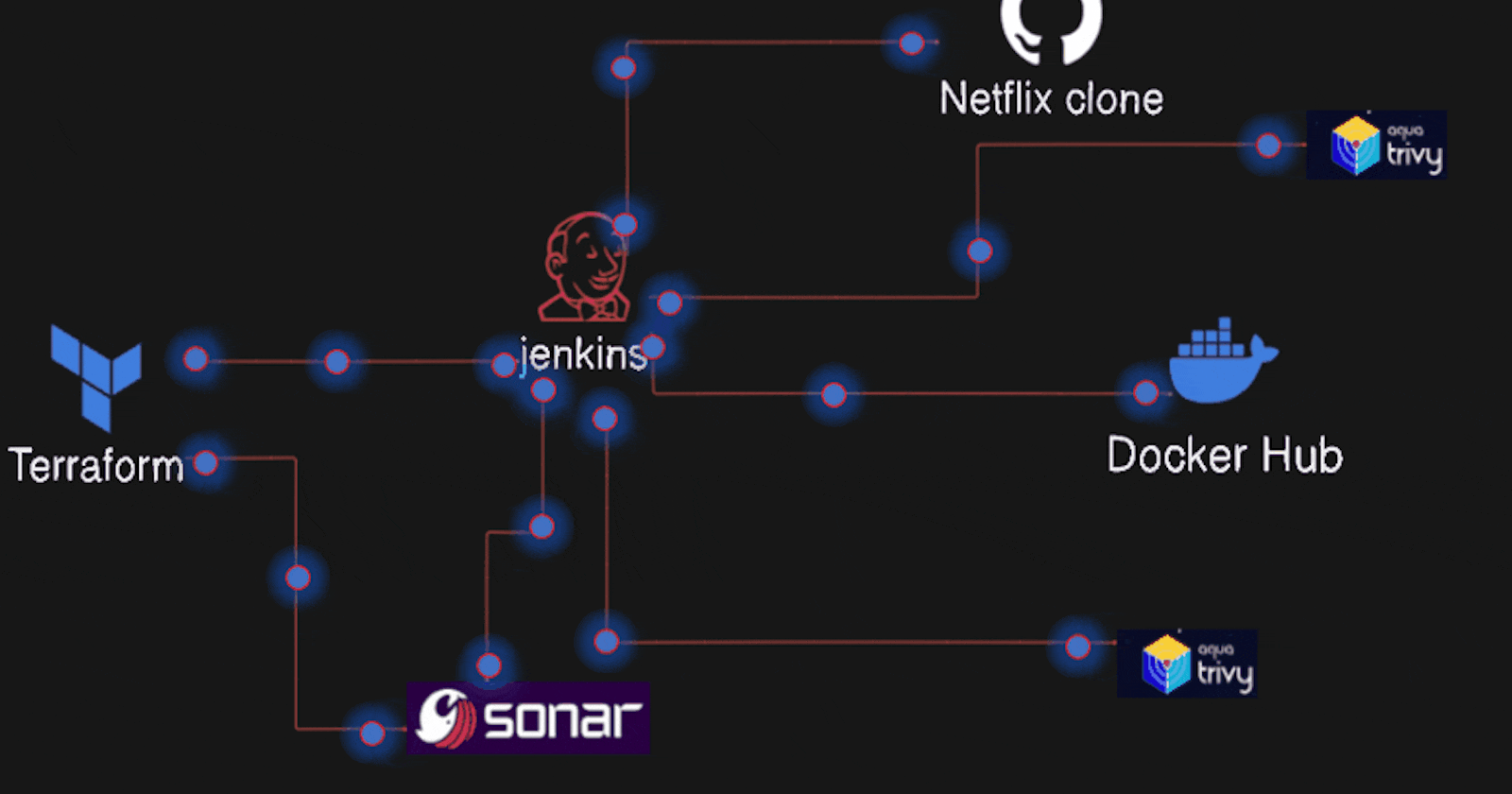GitHub Repo:- https://github.com/SahadevDahit/DevSecOps
NetFlix Repo :- https://github.com/SahadevDahit/Netflix-clone
Table of Contents
Introduction
Terraform SetUp
SonarQube SetUp
Jenkins SetUp
SMTP Configurations
WebHook Setup
1) Introduction
DevSecOps, a combination of Development, Security, and Operations, integrates security practices within the DevOps process to ensure that security is treated as a priority throughout the software development lifecycle. Here are some common use cases in DevSecOps:
Automated Security Testing: Integrate security testing tools (like static code analysis, dynamic code analysis, and software composition analysis) into the continuous integration/continuous deployment (CI/CD) pipeline to automatically identify and address security vulnerabilities as part of the development process.
Infrastructure as Code (IaC) Security: Implement security controls and best practices directly into infrastructure code using tools like Terraform, CloudFormation, or Ansible. This ensures that security configurations are consistent, auditable, and version-controlled alongside application code.
Secrets Management: Securely manage and distribute sensitive information such as API keys, passwords, and certificates using centralized secrets management tools. Integrate these tools into CI/CD pipelines to ensure secrets are securely accessed by authorized applications and personnel.
Vulnerability Management: Continuously monitor for vulnerabilities in both application code and third-party dependencies. Integrate vulnerability scanning tools into the CI/CD pipeline to identify and remediate vulnerabilities early in the development process.
Compliance as Code: Define compliance requirements as code and automate compliance checks within the CI/CD pipeline. This ensures that applications adhere to security standards and regulatory requirements from the beginning of development.
Threat Modeling: Incorporate threat modeling exercises into the design phase of software development to identify potential security threats and vulnerabilities early in the development lifecycle. This helps prioritize security measures and design secure architectures.
Container Security: Implement security measures for containerized applications, such as image scanning for vulnerabilities, runtime protection, and container isolation. Integrate container security tools into the CI/CD pipeline to automate security checks and ensure that only trusted containers are deployed.
Security Incident Response Automation: Develop automated incident response playbooks and integrate them into the CI/CD pipeline to quickly respond to security incidents. This includes actions such as rolling back deployments, isolating compromised components, and triggering alerts to security teams.
Continuous Compliance Monitoring: Implement continuous monitoring tools to detect deviations from security policies and configurations in production environments. Automate remediation actions to maintain compliance and reduce the risk of security breaches.
Security Training and Awareness: Provide security training and awareness programs for development, operations, and security teams to foster a culture of security throughout the organization. Include security best practices in development workflows and provide resources for secure coding and configuration.
By incorporating these use cases into the DevOps workflow, organizations can build and deploy secure software faster and more efficiently, reducing the risk of security breaches and ensuring compliance with regulatory requirements.
Terraform: Terraform is an open-source infrastructure as code (IaC) tool created by HashiCorp. It allows users to define and provision infrastructure resources such as virtual machines, networks, and storage in a declarative configuration language. Terraform helps automate the management of infrastructure and ensures consistency across environments.
Jenkins: Jenkins is an open-source automation server that facilitates continuous integration and continuous delivery (CI/CD) pipelines. It automates the building, testing, and deployment of software projects across multiple stages. Jenkins supports integration with various version control systems, build tools, and testing frameworks, making it a popular choice for CI/CD workflows.
SonarQube: SonarQube is an open-source platform for continuous code quality inspection and static code analysis. It provides tools for identifying and fixing code quality issues, security vulnerabilities, and bugs in various programming languages. SonarQube integrates with CI/CD pipelines to analyze code as part of the development process.
Trivy: Trivy is an open-source vulnerability scanner for containers and other artifacts. It scans container images and file systems for known vulnerabilities and provides detailed reports on security issues. Trivy supports scanning Docker images, file systems, and package managers like npm and Gem.
Docker: Docker is a platform for developing, shipping, and running applications in containers. Containers are lightweight, portable, and isolated environments that package applications and their dependencies. Docker simplifies the deployment of applications by abstracting away differences in operating systems and infrastructure.
DockerHub: DockerHub is a cloud-based registry service provided by Docker, Inc. It allows users to store, share, and distribute Docker images. DockerHub hosts a vast collection of public Docker images for various software components, making it easy to find and use pre-built containers in application development and deployment.
Shell Scripting: Shell scripting refers to writing scripts in a shell language (such as Bash) to automate tasks and execute commands on Unix-like operating systems. Shell scripts are commonly used for tasks like system administration, file manipulation, and process automation.
GitHub: GitHub is a web-based platform for hosting and collaborating on Git repositories. It provides version control, issue tracking, code review, and project management features, making it a popular choice for software development teams. GitHub facilitates collaboration among developers and supports CI/CD workflows through integrations with CI tools like Jenkins.
Next.js: Next.js is an open-source React framework for building server-side rendered (SSR) and static web applications. It simplifies the development of React applications by providing features like automatic code splitting, server-side rendering, and route pre-fetching. Next.js is widely used for building fast, modern web applications.
2) Terraform SetUp
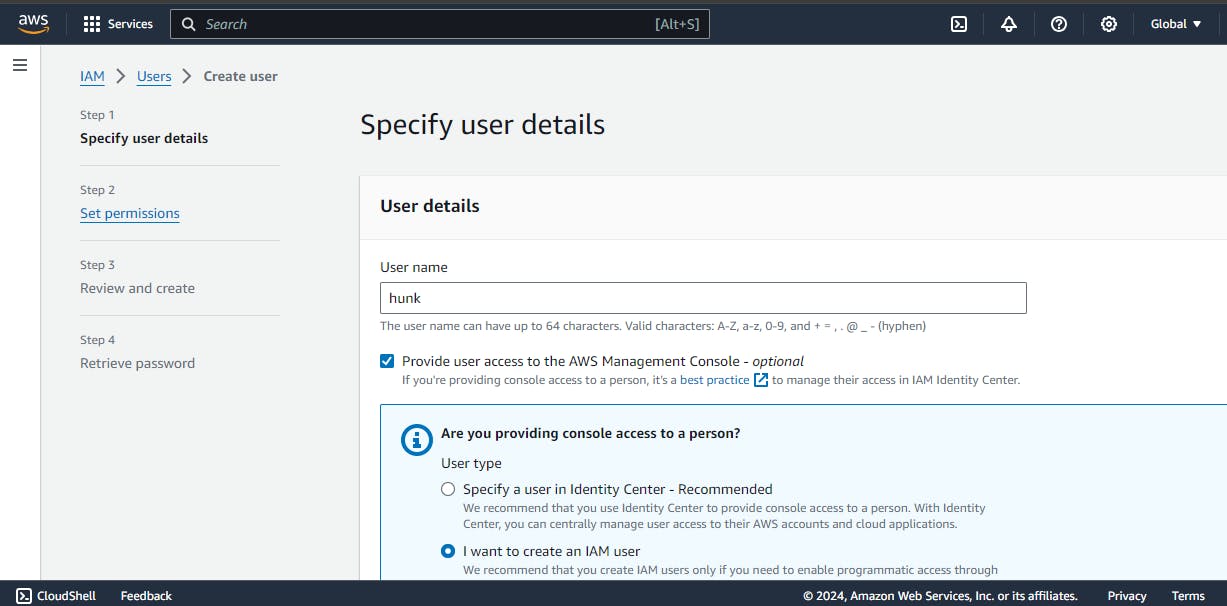

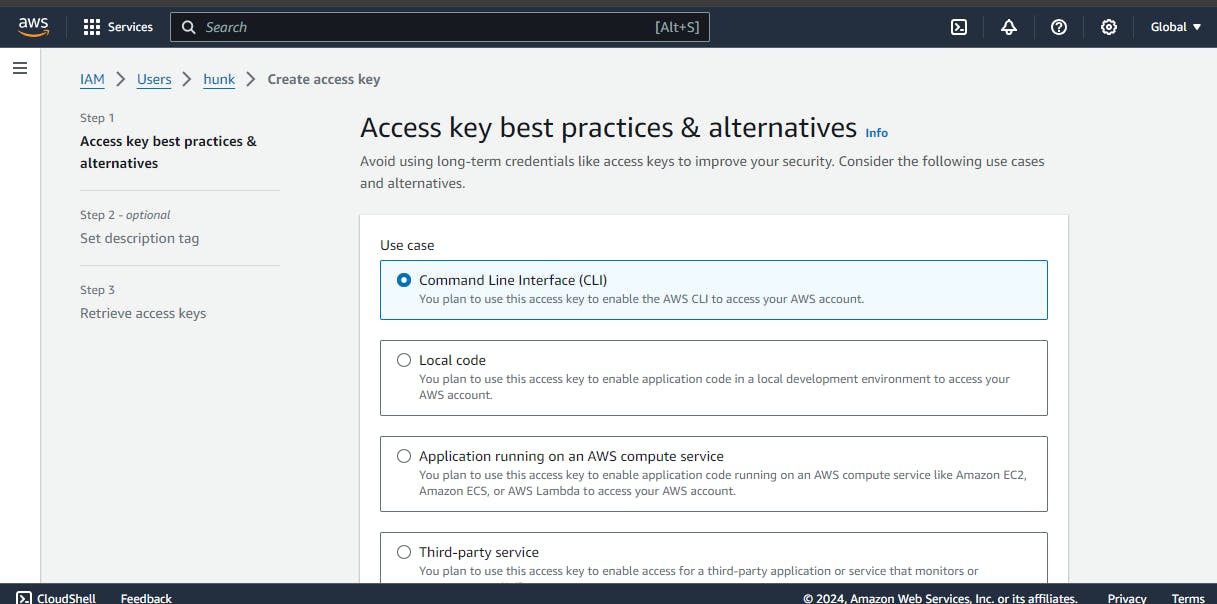


Go to the download link
Download according to your operating system
If you are using the Windows version, download the zip file and extract.
Then move the extracted folder to the c drive inside program files.
Then copy the path of the folder and add it to the system enviroment variables.
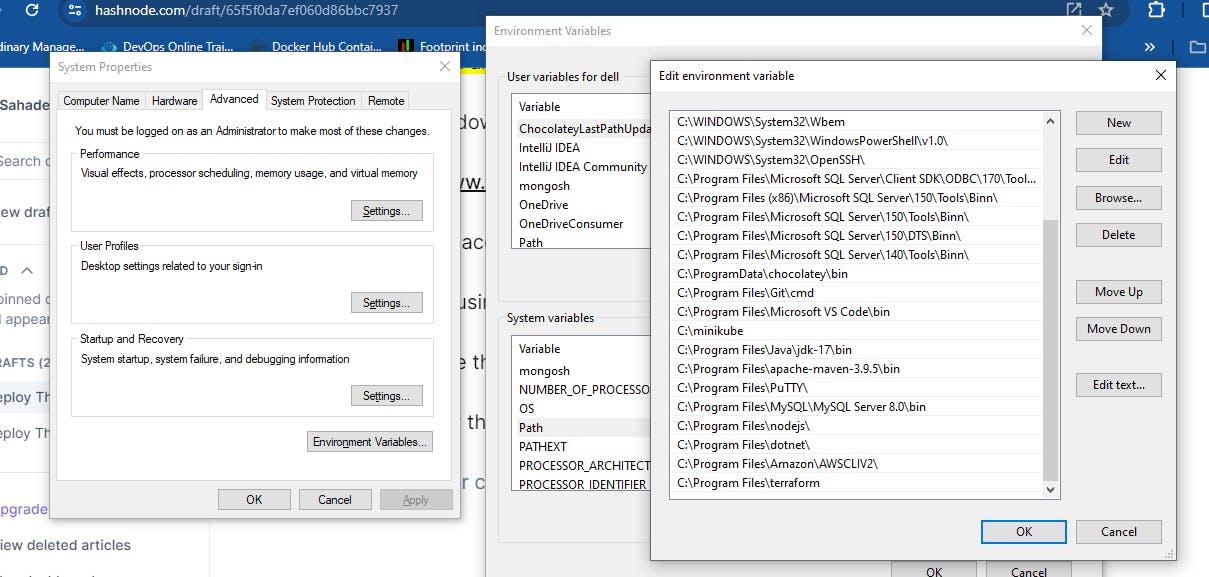
Then we also need to install the aws cli, For this
Go to the given link and download according to your operating system
docs.aws.amazon.com/cli/latest/userguide/ge..
3) SonarQube SetUp
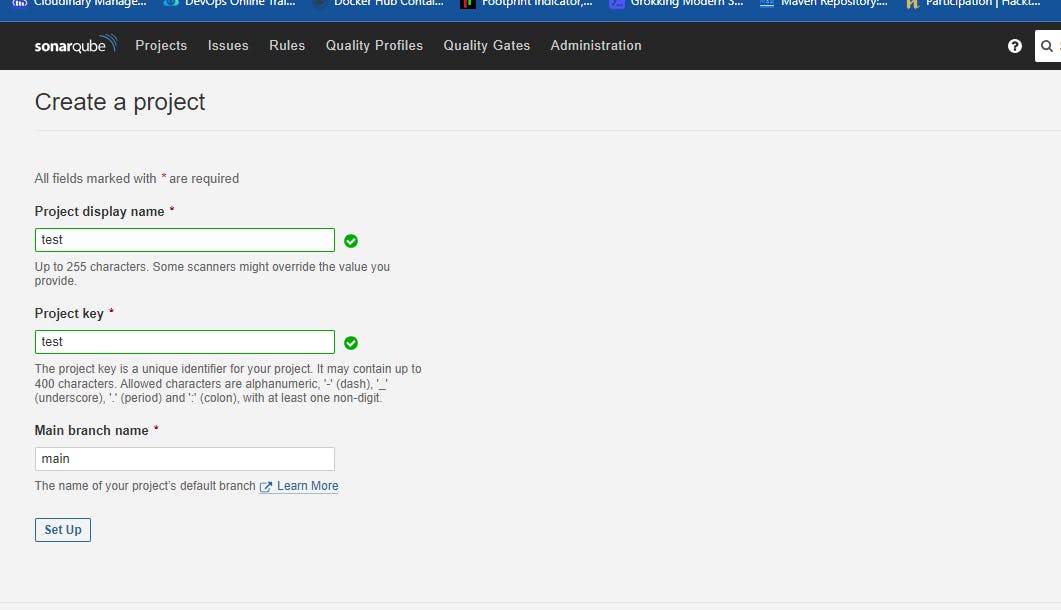

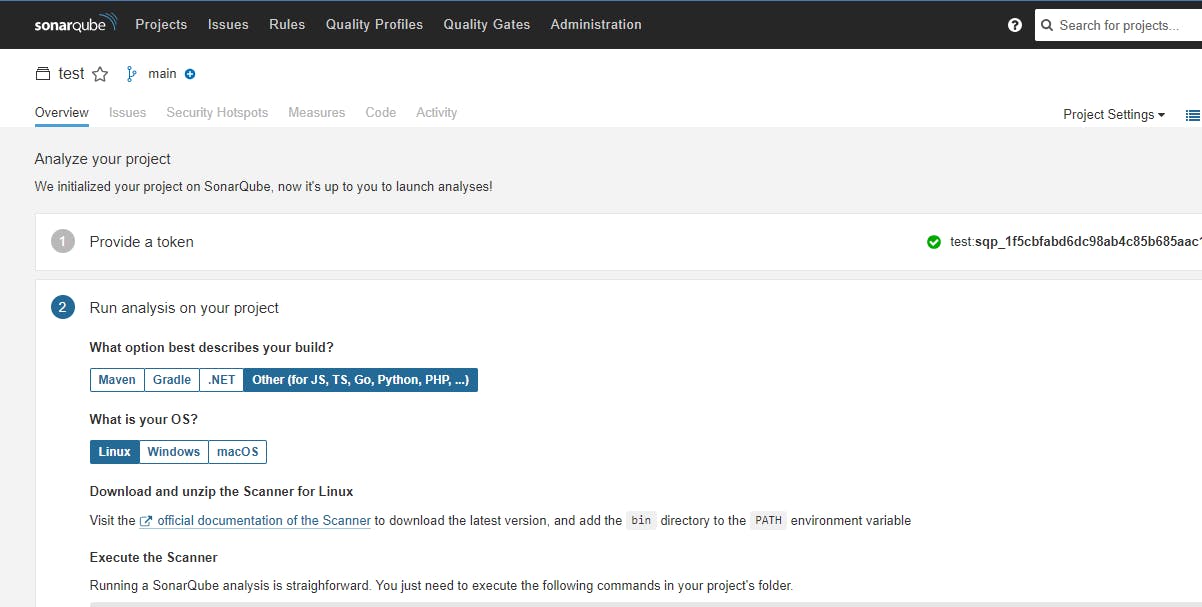
sonar-scanner \
-Dsonar.projectKey=test \
-Dsonar.sources=. \
-Dsonar.host.url=http://13.234.119.189:9000 \
-Dsonar.login=sqp_8e2dc1fe4ced4e1a0609cdf8ef1b86e7b68107af
sqp_8e2dc1fe4ced4e1a0609cdf8ef1b86e7b68107af
4) Jenkins SetUp

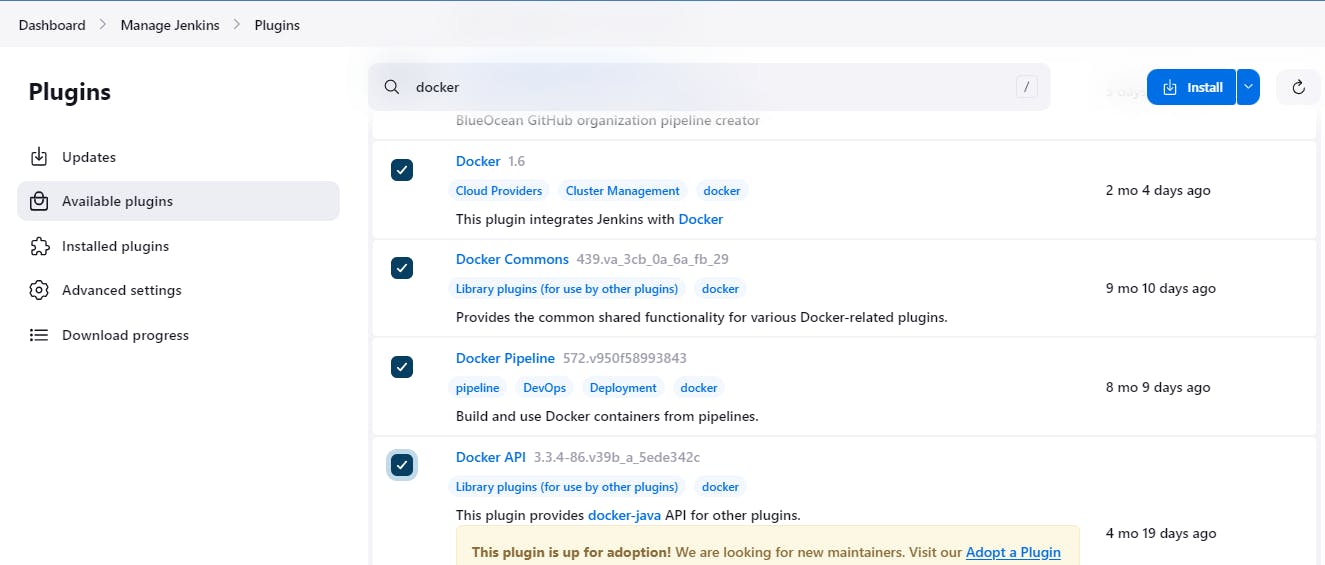
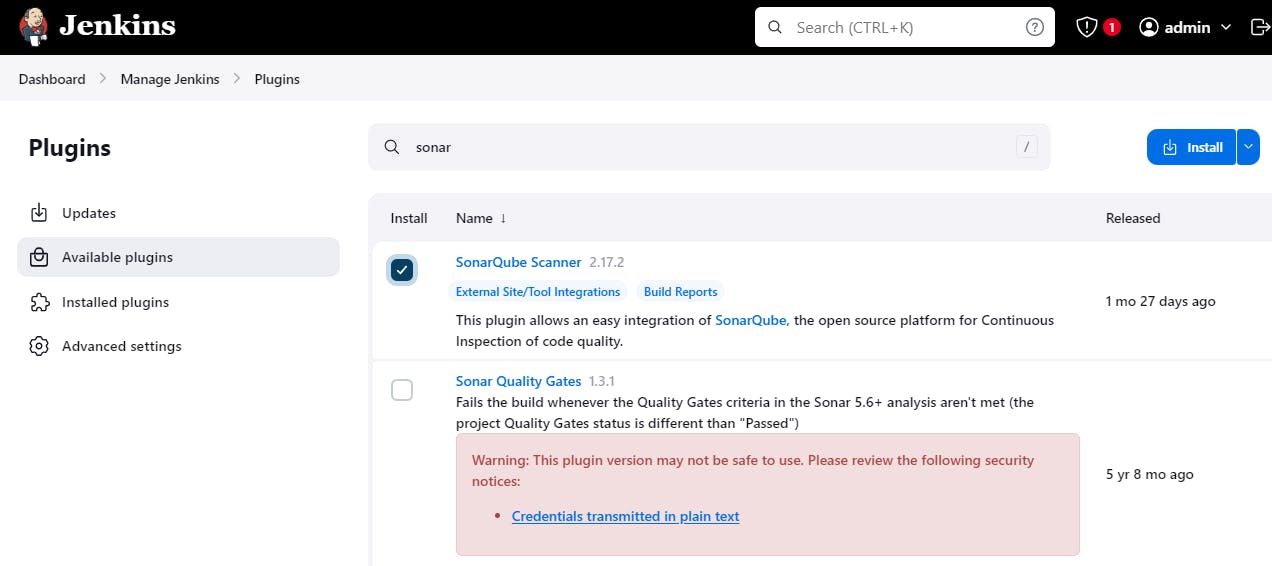

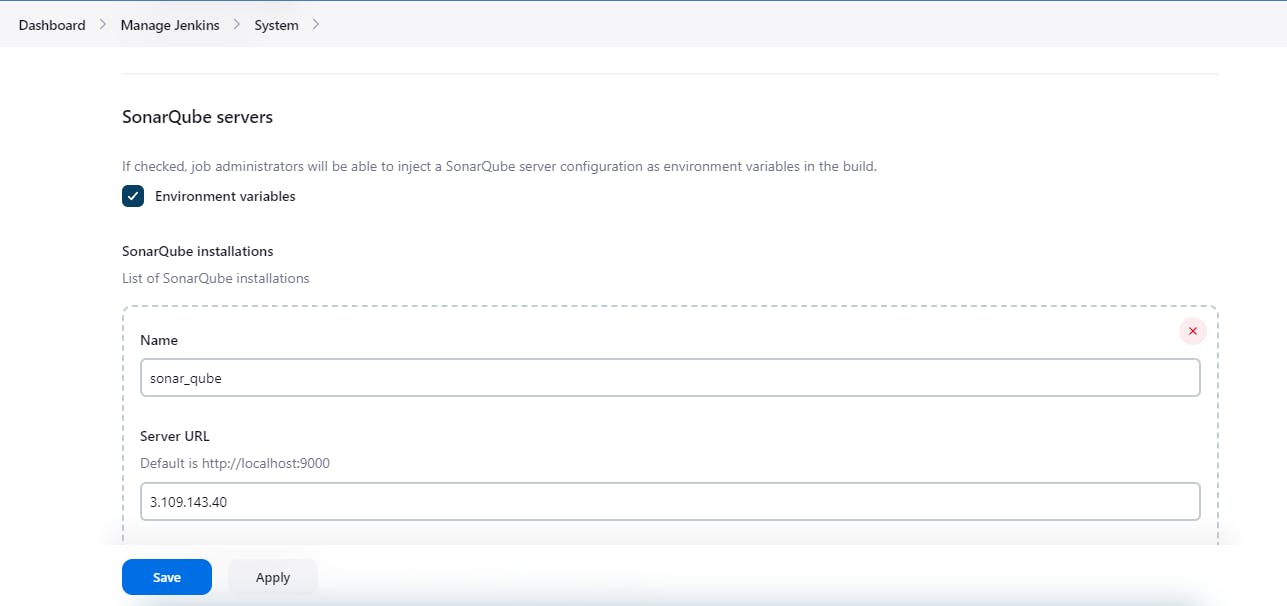
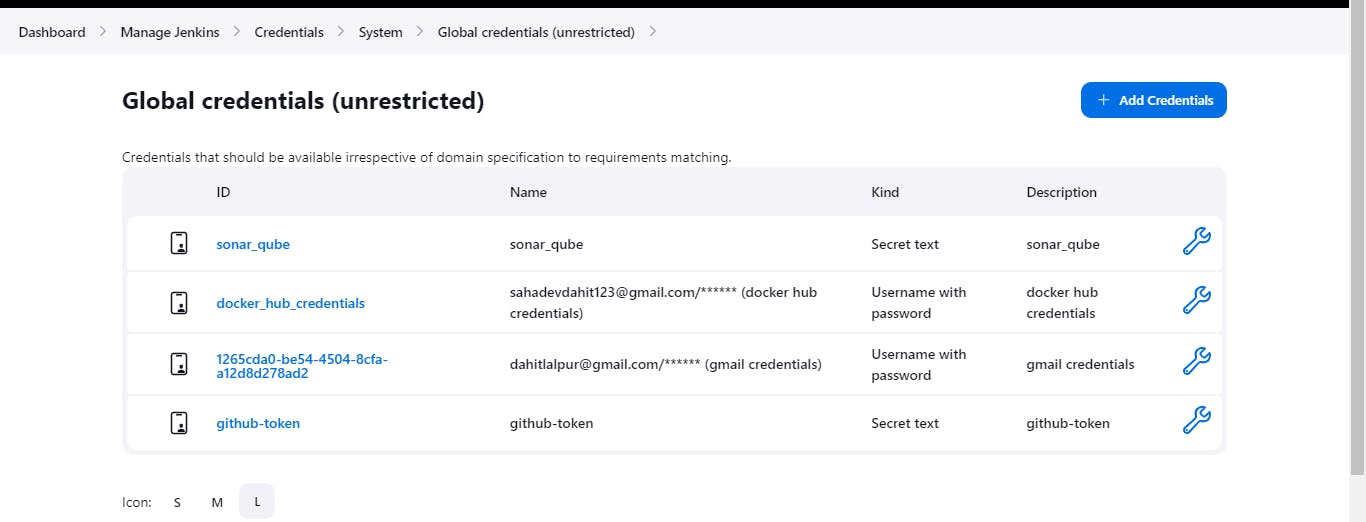
5) SMTP Configurations

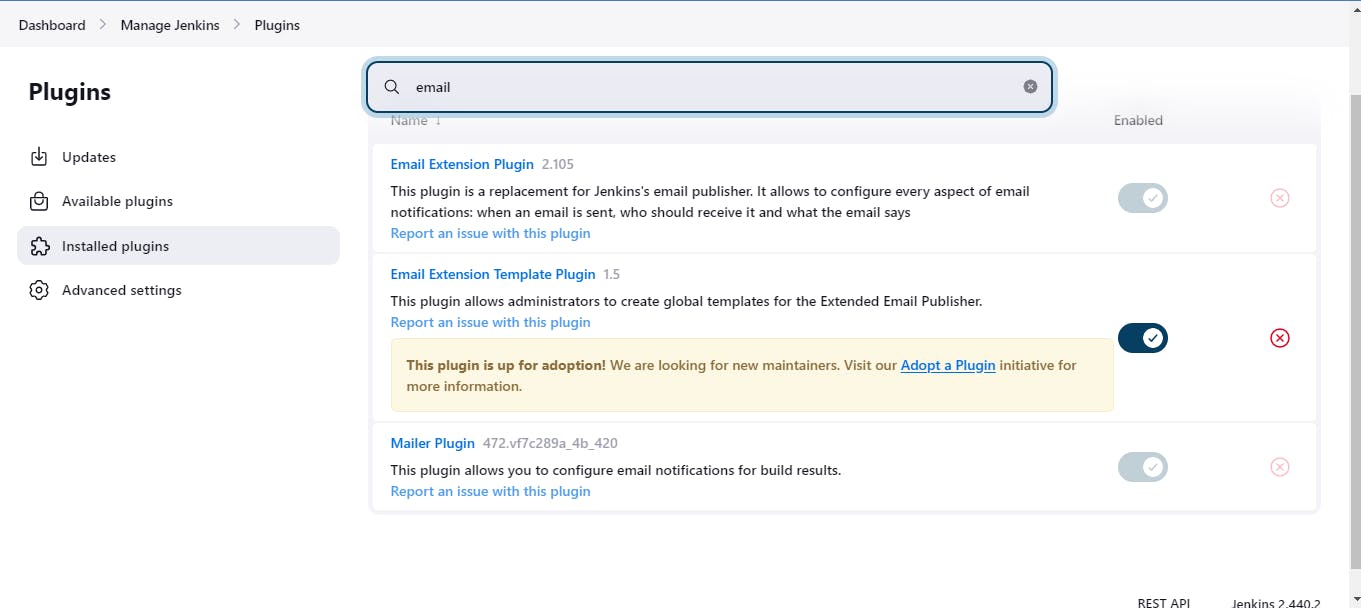
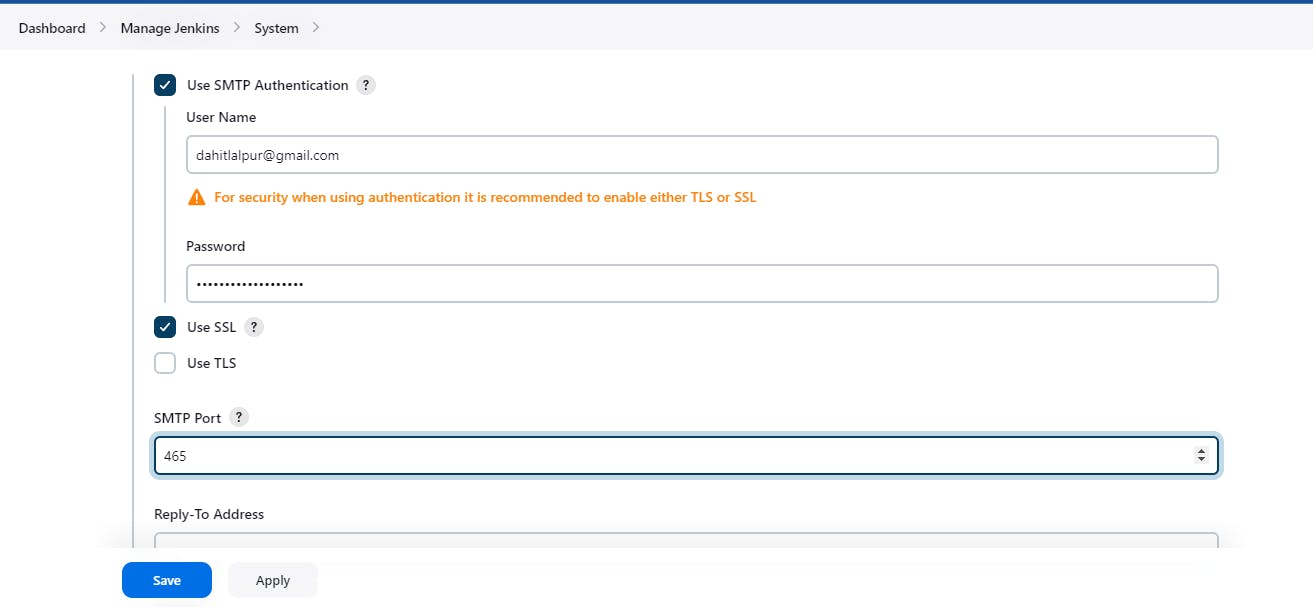
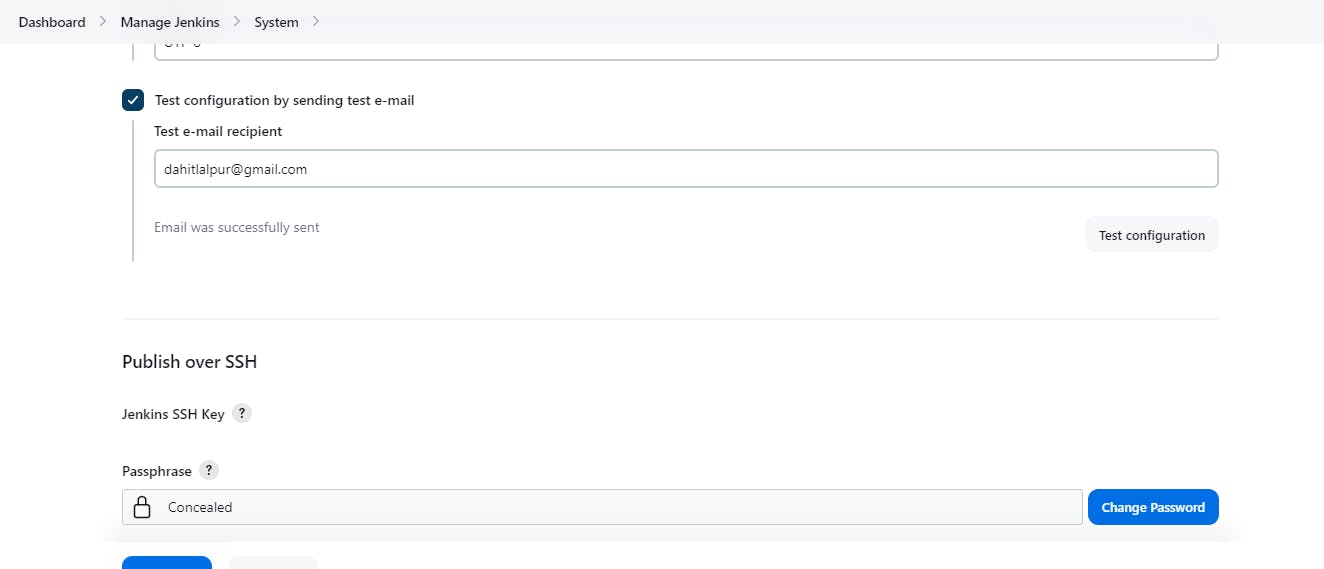



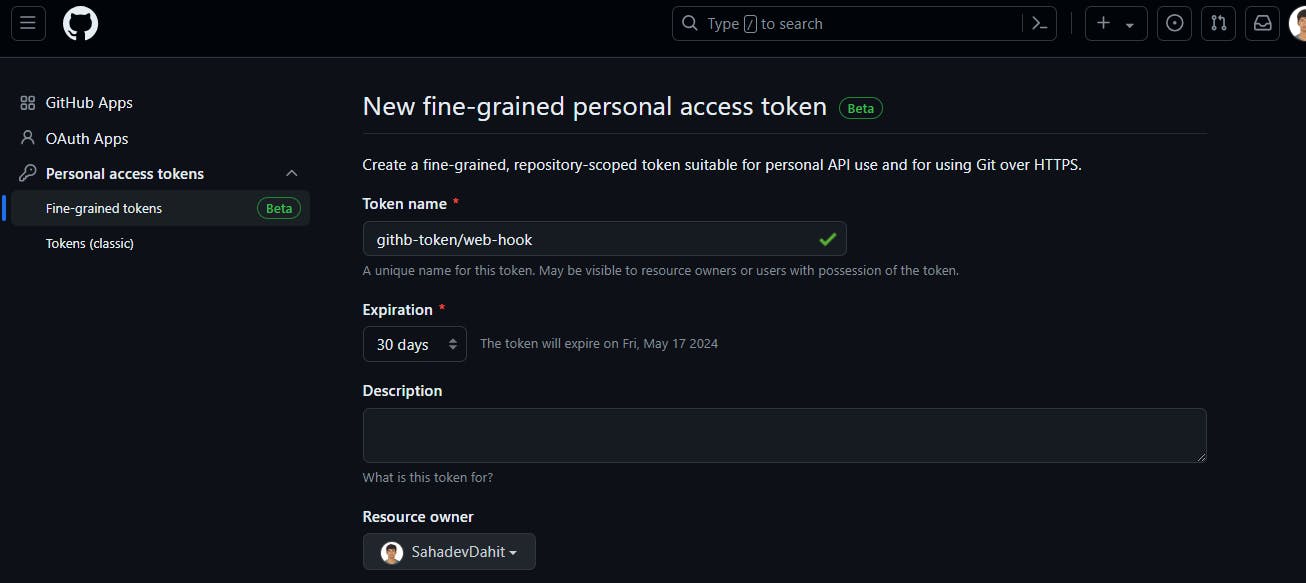
6) WebHook Setup
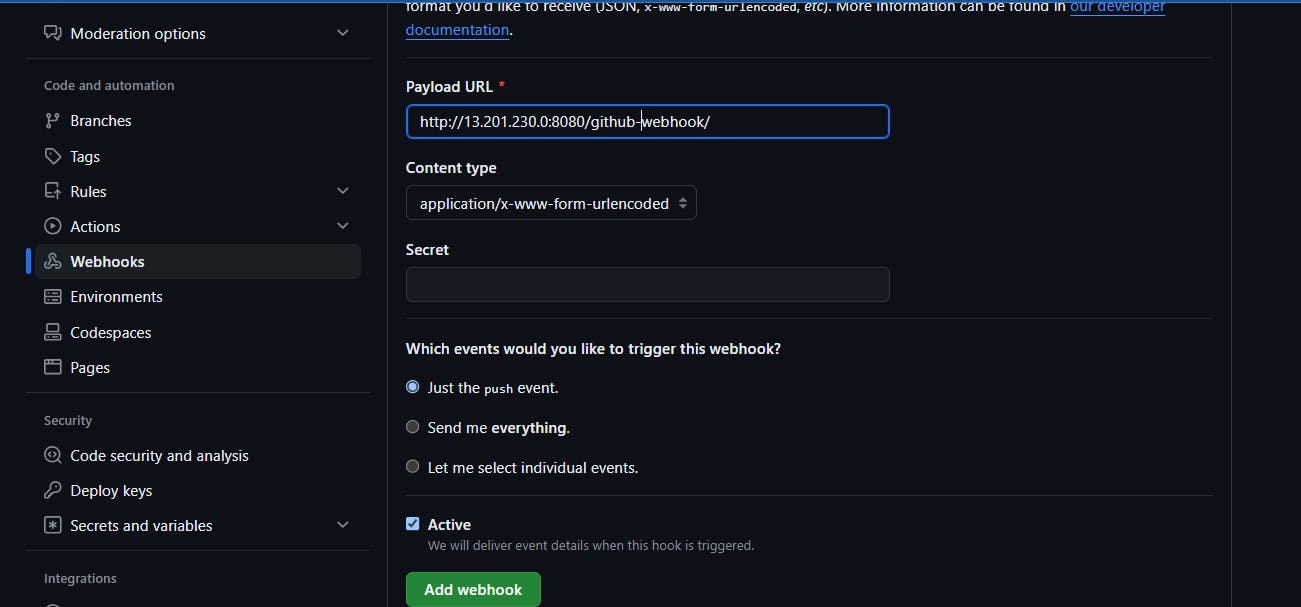
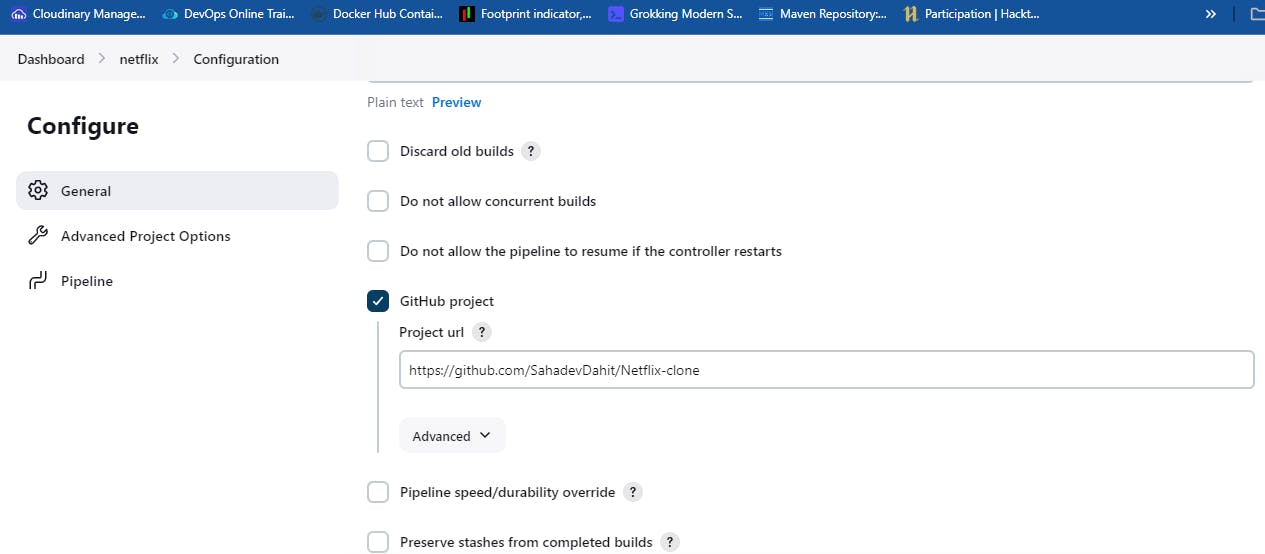
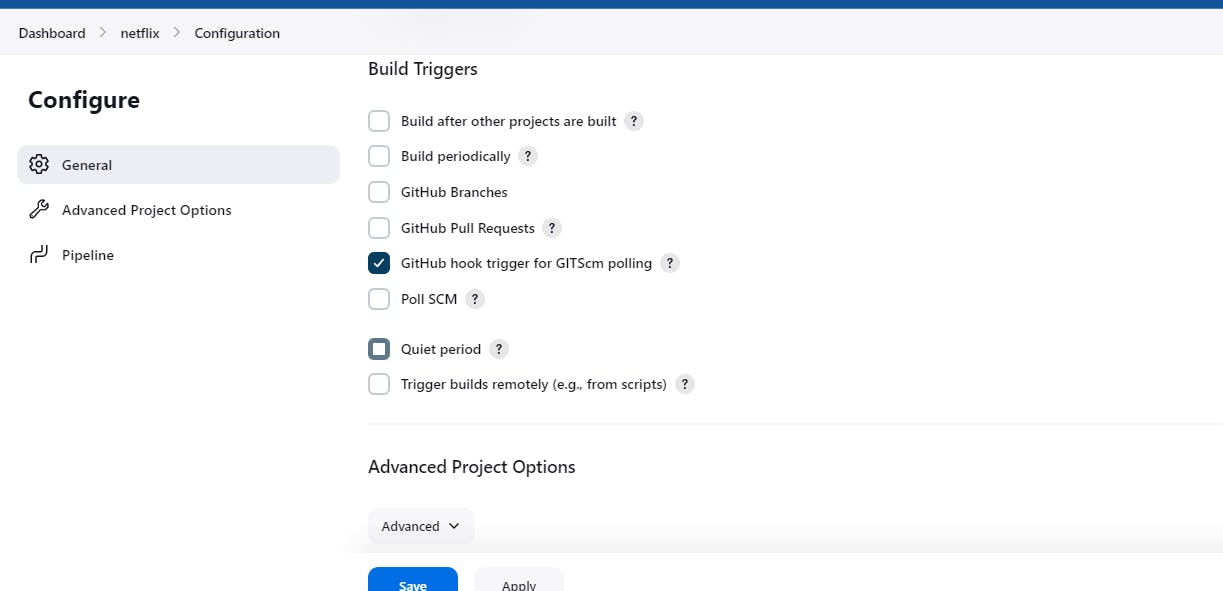
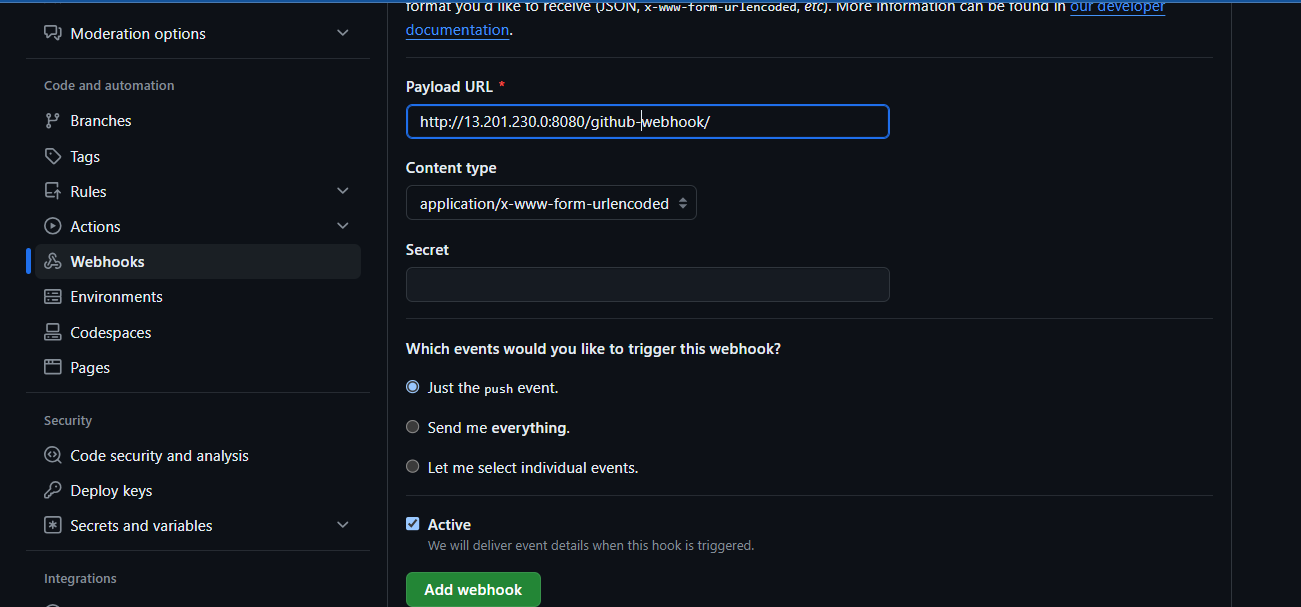
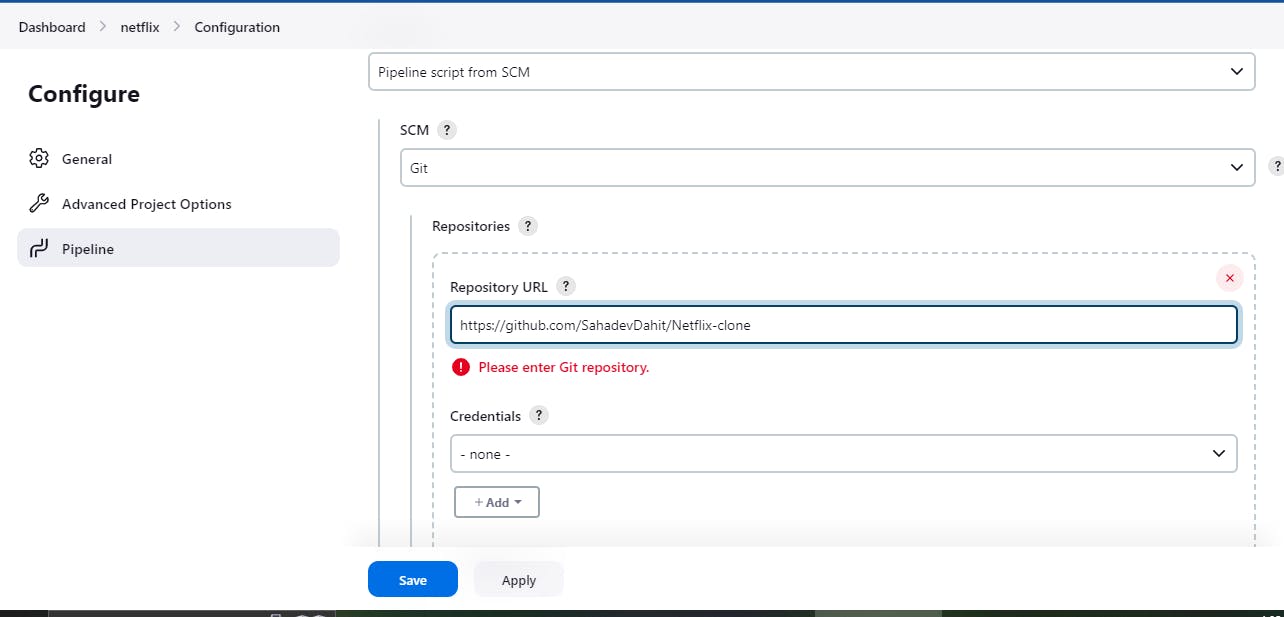
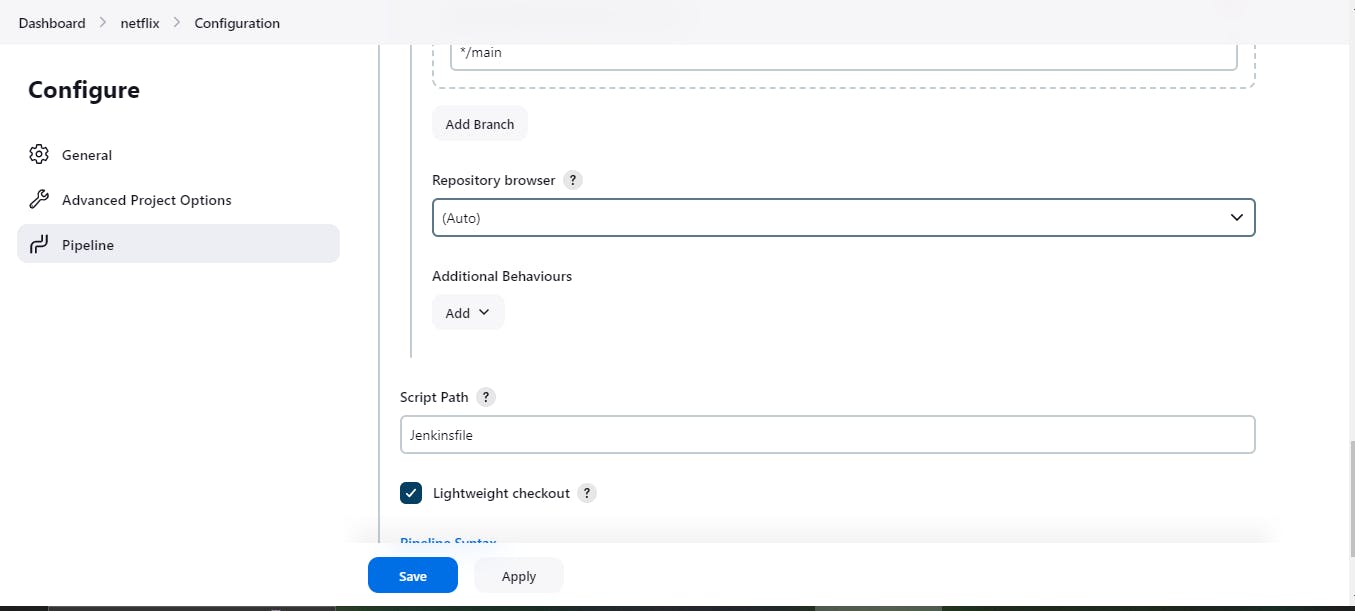
In this way, we can configure our devsecops projects.
Thanks for reading.......................................................
